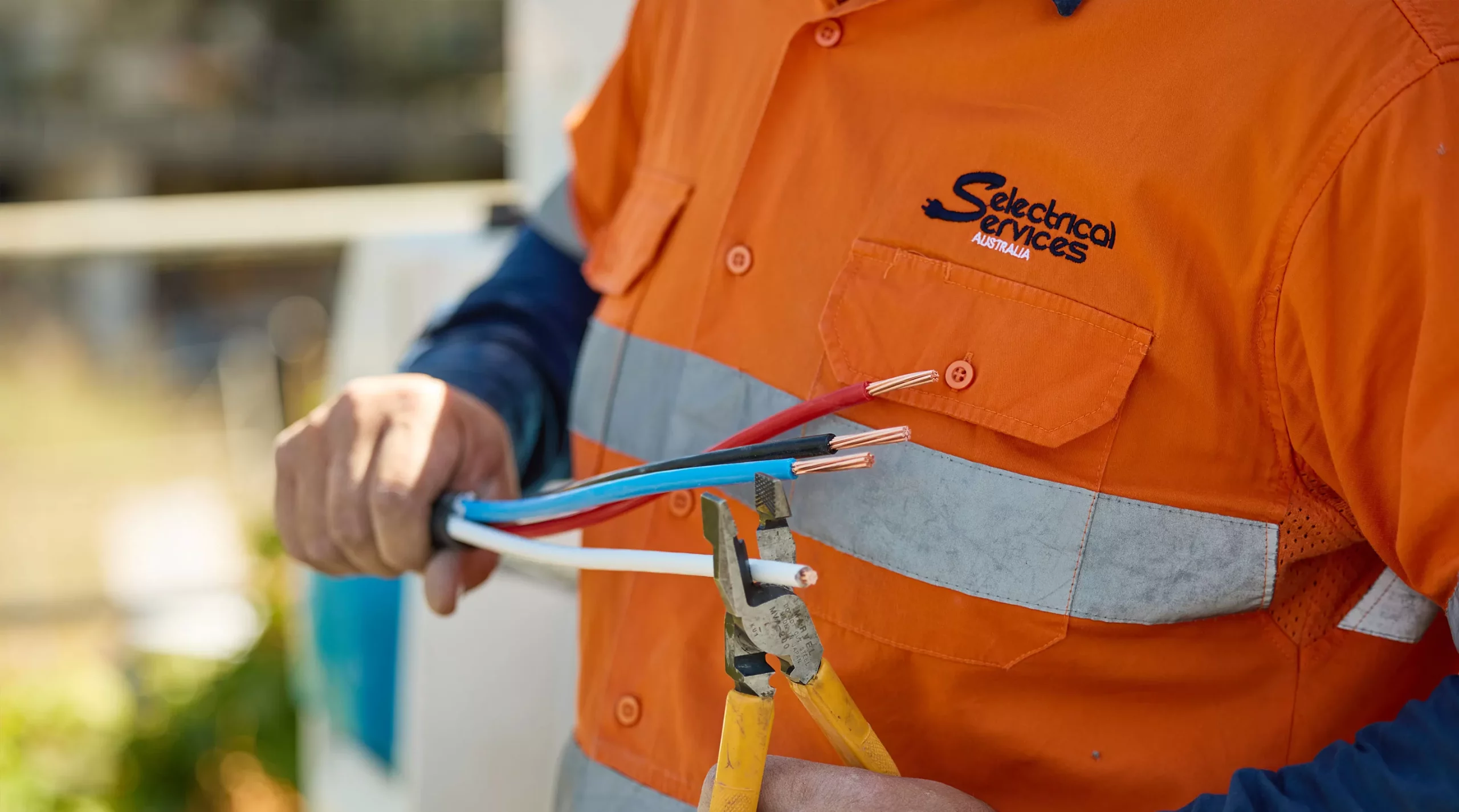In the realm of construction, ensuring a building’s structural integrity is paramount. While meticulous planning and execution are essential during the construction phase, addressing unforeseen issues and defects post-completion is equally crucial. This comprehensive guide delves into the intricacies of rectification works, providing homeowners, builders, and industry professionals with a roadmap to navigate the complexities of resolving construction defects effectively.
Rectification Works: Getting Your Building Back on Track
Imagine investing time, resources, and dreams into a construction project, only to discover imperfections upon completion. Cracks in the wall, leaky faucets, or ill-fitting doors can quickly overshadow the satisfaction of a finished project.
This is where rectification works come into play. This essential process involves identifying and rectifying defects to ensure the building adheres to safety standards, contractual obligations, and the owner’s expectations.
Playing Detective: Finding Out What Went Wrong
Before embarking on the rectification journey, a thorough understanding of the defects is paramount. This involves:
- Comprehensive Inspection: Conduct a meticulous examination of the building, noting any visible flaws, structural inconsistencies, or deviations from the approved plans.
- Documentation: Meticulously document each defect, including its location, size, and any other relevant details. Photographs and detailed notes serve as valuable evidence throughout the rectification process.
- Root Cause Analysis: Delve beyond the superficial and investigate the underlying cause of each defect. This could stem from design flaws, material defects, construction errors, or even external factors like extreme weather conditions.
The Fix-It List: Getting Those Defects Sorted
Fortunately, homeowners and builders aren’t left to navigate the rectification process alone. Contractual agreements typically outline the responsibilities of each party, particularly the contractor’s obligation to rectify defects within a specific timeframe.
- Defect Liability Period: Most contracts include a “defect liability period,” commonly referred to as a warranty period, during which the contractor is legally bound to address and rectify defects that arise. This period usually spans several months to a year after the completion of the project.
- Contractual Obligations: Review the construction contract to understand the specific terms related to rectification works, including timelines, payment obligations, and dispute resolution mechanisms.
Time is of the Essence: The Defect Liability Period
The defect liability period is a critical timeframe during which homeowners and builders should remain vigilant in identifying and reporting defects.
- Timely Reporting: Promptly report any defects to the contractor in writing, providing detailed descriptions and photographic evidence.
- Maintaining Records: Keep thorough records of all communication, including emails, letters, and meeting minutes, related to defect reporting and rectification efforts.
Preventing a Construction Crisis: Top Tips for Smooth Sailing
While rectification works are sometimes necessary, implementing proactive measures during the construction phase can significantly minimize the occurrence of defects.
Think Ahead, Build Smart:
- Detailed Planning: A comprehensive and well-defined plan is the foundation of a successful construction project. Ensure clear communication of design specifications, material choices, and construction methodologies to all stakeholders.
- Stringent Quality Control: Implement robust quality control measures at every stage of construction. Regular inspections by qualified professionals help identify and address potential issues early on.
- Embrace Technology: Leverage digital tools and technologies, such as Building Information Modeling (BIM) and project management software, to enhance collaboration, improve accuracy, and facilitate efficient defect tracking and management.
Getting Things Back on Track:
- Open Communication: Foster transparent and consistent communication between homeowners, contractors, and all parties involved throughout the project lifecycle. Regular updates, site meetings, and prompt responses to queries can prevent misunderstandings and minimize the risk of disputes.
- Quality Materials and Workmanship: Never compromise on the quality of construction materials and workmanship. Employing skilled laborers and utilizing durable, high-quality materials can significantly reduce the likelihood of defects.
- Stay Informed and Involved: Homeowners should stay actively involved throughout the construction process. Regular site visits, asking questions, and seeking clarification on any aspect of the project can help ensure that expectations are met.
Shielding Yourself from Trouble:
- Meticulous Documentation: Maintaining comprehensive records throughout the project is crucial, from initial contracts and design plans to inspection reports and communication logs. This documentation serves as vital evidence in case of disputes or insurance claims.
- Seek Legal Counsel: Consulting with a construction law expert can provide valuable insights into contractual obligations, protect your rights, and help navigate legal complexities should any issues arise.
- Adequate Insurance Coverage: Ensure you have appropriate insurance policies in place, covering both the construction phase and potential defects that may emerge post-completion.
By adhering to these preventative measures, homeowners and builders can significantly reduce the risk of encountering major defects, paving the way for a smoother construction experience and a higher quality final product.
What are the essential steps in the rectification process?
The rectification process, while often perceived as a reactive measure to address construction defects, is best approached as a systematic and structured endeavor.
Think of it as a journey toward restoring a building to its intended state, ensuring it meets safety standards, contractual obligations, and the owner’s expectations. Here’s a step-by-step breakdown of the essential stages:
1. Play Detective: Comprehensive Inspection
This initial phase sets the foundation for effective rectification. It involves:
- Thorough Examination: Experienced professionals, often including engineers or building inspectors, conduct a comprehensive assessment of the reported defects.
- Multifaceted Approach: Inspections extend beyond visual observations and may involve utilizing specialized equipment for material testing, moisture analysis, or structural integrity assessments.
- Detailed Documentation: Every identified defect is meticulously documented, including its location, size, nature, and potential causes. Photographic and video evidence is crucial for future reference.
2. Get to the Root of the Problem: Root Cause Analysis
Uncovering the underlying cause of each defect is paramount to ensure effective and lasting rectification. This phase involves:
- Investigative Approach: A thorough analysis of the construction process, materials used, environmental factors, and any other relevant variables is conducted.
- Expert Consultation: In complex cases, seeking expertise from specialized consultants, such as structural engineers or material scientists, may be necessary to pinpoint the root cause accurately.
- Documentation of Findings: All findings, conclusions, and recommendations resulting from the root cause analysis are documented in a clear and concise manner, forming the basis for the next stage.
3. Map Out the Solution: Development of the Rectification Plan
With a comprehensive understanding of the defects and their root causes, the focus shifts to formulating a robust plan of action. This stage involves:
- Detailed Repair Methodology: The plan outlines the specific repair procedures for each defect, specifying the techniques, materials, and equipment required.
- Timeline and Sequencing: A realistic timeline for each repair task, considering dependencies and potential challenges, is established to ensure efficient execution.
- Quality Control Measures: The plan incorporates stringent quality control measures to be implemented throughout the rectification process, ensuring adherence to standards and specifications.
4. Time to Fix It: Implementation of Rectification Measures
This phase marks the transition from planning to action, requiring skilled labor and adherence to the established rectification plan. Key aspects include:
- Skilled Labor and Supervision: Engaging qualified and experienced contractors or subcontractors specializing in the specific repair works is essential.
- Material Procurement: Procuring high-quality materials that meet the required specifications and comply with building codes is crucial for long-lasting repairs.
- Ongoing Monitoring and Documentation: Continuous monitoring of the rectification works ensures adherence to the plan, while meticulous documentation of progress, material usage, and any unforeseen challenges is maintained.
5. Double-Check Everything: Verification and Validation
Once the rectification works are completed, a comprehensive verification and validation process is conducted to ensure the effectiveness and quality of the repairs. This stage involves:
- Final Inspections: Thorough inspections are carried out by qualified professionals to verify that all repairs have been executed as per the plan and meet the required standards.
- Testing and Commissioning: Depending on the nature of the repairs, testing and commissioning of specific building systems or components may be required to ensure proper functionality.
- Documentation and Handover: Detailed documentation, including inspection reports, test results, and as-built drawings reflecting the rectified works, is compiled and handed over to the owner.
Key Takeaways (in a nutshell):
- Rectification is a systematic process: It involves a series of well-defined steps to ensure comprehensive and effective defect resolution.
- Understanding root causes is critical: Addressing the underlying causes of defects is crucial for achieving long-lasting solutions.
- Thorough planning is essential: A detailed rectification plan serves as a roadmap for successful execution.
- Collaboration is key: Effective rectification requires seamless communication and collaboration between homeowners, contractors, and any involved experts.
How to Identify and Address Root Causes of Construction Defects
Identifying and addressing the root causes of construction defects is not merely about fixing what’s broken; it’s about implementing a proactive approach to enhance building integrity and prevent recurrence. Here’s a strategic roadmap for homeowners, builders, and industry professionals to effectively identify and address those underlying issues:
Step 1: Play Inspector Gadget – Embrace Regular Inspections
Regular inspections throughout the construction process are crucial for early defect detection. This involves:
- Scheduled Inspections: Implement a comprehensive inspection schedule that aligns with key construction milestones, ensuring no stage is left unchecked.
- Engaging Qualified Professionals: Employ certified building inspectors or experienced engineers to conduct thorough inspections, providing unbiased assessments and expert opinions.
- Utilizing Checklists: Develop and utilize detailed checklists tailored to each inspection stage, ensuring all critical areas and components are examined systematically.
Step 2: Document Everything! – Create a Comprehensive Trail
Maintaining thorough documentation throughout the project lifecycle is paramount. This includes:
- Detailed Defect Reports: Document every observed defect, capturing its location, size, description, and photographic evidence.
- Communication Logs: Keep records of all communication related to defects, including emails, letters, meeting minutes, and phone calls, to maintain a clear trail of correspondence.
- Photographic and Video Evidence: Utilize photographs and videos extensively to visually document defects and progress during inspections and rectification work.
Step 3: Channel Your Inner Sherlock Holmes – Investigate the Root Cause
Once defects are identified, it’s time to delve deeper to understand their root causes. This investigative phase involves:
- Analyzing Design Documents: Scrutinize design drawings, specifications, and calculations to identify potential errors or inconsistencies that might have contributed to the defects.
- Reviewing Material Specifications: Verify that the materials used in construction meet the required standards and specifications, and investigate if any material defects could be contributing factors.
- Assessing Construction Practices: Evaluate the construction methodologies employed, checking for adherence to best practices, building codes, and industry standards.
- Considering Environmental Factors: Analyze if external factors, such as extreme weather conditions, soil instability, or environmental hazards, played a role in causing the defects.
Step 4: Create a Solid Plan of Attack – Develop a Targeted Rectification Plan
Based on the root cause analysis, develop a comprehensive rectification plan that outlines a clear path forward. This plan should include:
- Specific Repair Procedures: Clearly define the repair methods for each defect, detailing the step-by-step procedures, required tools, and safety precautions.
- Material Selection: Specify the exact type, grade, and quantity of materials required for each repair, ensuring they meet quality standards and comply with building codes.
- Timeline and Logistics: Establish a realistic timeline for each repair task, considering material lead times, labor availability, and any necessary permits or approvals.
Step 5: Time to Take Action! – Execute and Monitor Rectification Works
With the plan in place, it’s time to put the wheels in motion and execute the rectification works. This phase demands close supervision and ongoing monitoring to ensure effectiveness.
- Hiring Qualified Professionals: Engage experienced and licensed contractors specializing in the specific types of repairs required, ensuring they have a proven track record of quality workmanship.
- Regular Site Inspections: Conduct frequent site inspections during the rectification process to monitor progress, ensure adherence to the plan, and address any unforeseen challenges promptly.
- Quality Control Checks: Implement rigorous quality control measures throughout the repair works, including material inspections, workmanship assessments, and adherence to safety protocols.
Pro Tip: Prevention is always better than cure. By implementing robust quality control measures from the project’s outset, engaging experienced professionals, and using high-quality materials, the risk of defects occurring in the first place can be significantly minimized.
Think of it this way: Investing time and effort in identifying and addressing root causes isn’t just about fixing what’s broken – it’s about building better structures from the ground up and fostering a culture of quality and accountability in construction practices.
Understanding Contractual Obligations and Responsibilities in Rectification Works
Navigating the intricacies of construction contracts can be daunting, but understanding your rights and responsibilities, particularly those related to rectification works, is crucial for a smooth and successful project.
Navigating the Contractual Landscape
Construction contracts serve as the backbone of any project, outlining the rights, responsibilities, and obligations of all parties involved. When it comes to rectification works, these contracts typically include specific clauses that address defects and their remediation.
- Clear Definitions: Contracts should clearly define what constitutes a “defect” and outline the scope of the contractor’s responsibility in rectifying such defects.
- Defect Liability Period: Most contracts will specify a “defect liability period,” commonly known as a warranty period, during which the contractor is legally obligated to rectify defects that arise at no additional cost to the owner. This period typically ranges from a few months to a year after the completion of the project.
- Notification Procedures: Contracts should outline the procedures for reporting defects, including timelines, required documentation, and designated points of contact.
Responsibilities During the Rectification Period
During the defect liability period, both the contractor and the owner have specific responsibilities to ensure efficient and effective rectification:
Contractor’s Obligations:
- Timely Response: The contractor is obligated to respond promptly to defect notifications from the owner, acknowledging receipt and outlining a plan of action.
- Thorough Investigation: The contractor should conduct a thorough investigation of reported defects, including site visits, inspections, and if necessary, engaging specialized consultants to determine the root cause.
- Timely Rectification: Once the cause of the defect is identified, the contractor is responsible for carrying out the necessary rectification works within a reasonable timeframe, as outlined in the contract.
Owner’s Responsibilities:
- Timely Notification: The owner is responsible for promptly notifying the contractor of any observed defects within the defect liability period. Delays in notification may affect the contractor’s ability to rectify the issue effectively.
- Access to the Property: The owner must provide the contractor with reasonable access to the property to carry out the necessary inspections and rectification works.
- Cooperation: The owner should cooperate with the contractor throughout the rectification process, providing necessary information, facilitating access to relevant areas, and adhering to agreed-upon schedules.
Resolving Disputes: Seeking Amicable Solutions
In an ideal scenario, the rectification process unfolds smoothly, with the contractor efficiently addressing defects and the owner fulfilling their responsibilities. However, disputes can arise, and it’s crucial to have mechanisms in place to address them effectively.
- Open Communication: Encourage open and transparent communication between the owner and the contractor throughout the process. Address concerns promptly and strive to find mutually agreeable solutions.
- Mediation: If direct communication fails to resolve a dispute, consider engaging a neutral third-party mediator. Mediators are trained to facilitate discussions, help parties find common ground, and reach a mutually acceptable resolution.
- Legal Recourse: In extreme cases where mediation fails or is not a viable option, seeking legal advice from a construction law expert may be necessary.
Key Takeaways: Building a Foundation of Trust and Accountability
- Contracts are Key: Thoroughly review and understand the rectification clauses in your construction contract before signing.
- Clear Communication: Foster open and transparent communication between all parties throughout the project lifecycle.
- Documentation is Paramount: Maintain detailed records of all communications, inspections, and rectification works.
- Seek Professional Guidance: Do not hesitate to consult with construction law experts or qualified mediators if disputes arise.
By understanding their contractual obligations, embracing proactive communication, and seeking professional guidance when necessary, homeowners and contractors can navigate the complexities of rectification works effectively, ensuring building integrity and fostering a foundation of trust and accountability.
Conclusion
Ensuring building integrity through effective rectification works is not just a contractual obligation but a shared responsibility that demands a collaborative approach. By understanding the nuances of the rectification process, embracing preventative measures, and fostering transparent communication, homeowners, builders, and industry professionals can contribute to creating robust and durable structures that stand the test of time. Remember, a proactive and informed approach is key to transforming construction challenges into opportunities for improvement and achieving lasting building integrity.
Are you curious about the material cost to finish a 1200 sq ft house? How about the types of roofs in maisonette house in kenya shillings or warning signs on building sites? Or are you interested in the cost of 4 bedroom bungalow in lagos nigeria?
- Tile Backsplash With White Cabinets: A Kitchen Design Guide - November 25, 2025
- Best Backsplash For White Cabinets: Ideas To Transform Your Kitchen - November 24, 2025
- Modern White Kitchen Backsplash: A Guide to Stylish Kitchen Designs - November 23, 2025










